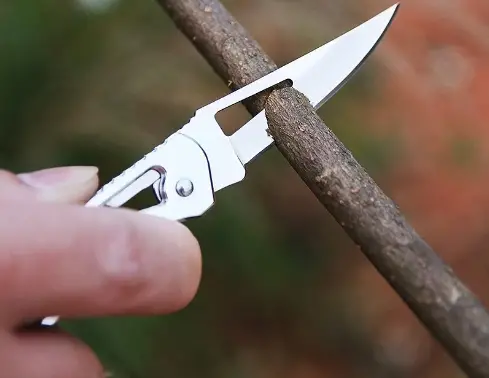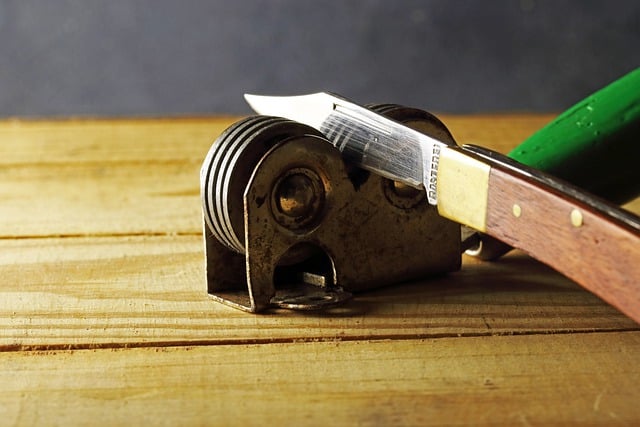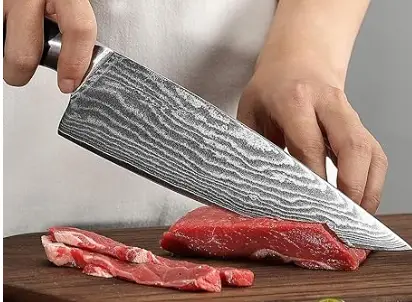Looking for the perfect balance of durability and cost-efficiency in your steel products? Look no further than 2Cr13 stainless steel. From kitchen cutlery to surgical instruments, this versatile material is trusted across various industries for its exceptional corrosion resistance and impressive strength.
In this comprehensive guide, we’ll delve into the numerous benefits of 2Cr13 stainless steel, explore its wide-ranging applications across different sectors, and provide you with practical maintenance tips to ensure its longevity.
Whether you’re a professional in the manufacturing field or simply intrigued by the science of metallurgy, understanding the properties and uses of this steel grade is essential. Join us as we unravel the secrets behind 2Cr13 stainless steel and equip you with the knowledge needed to make informed decisions about incorporating it into your projects.
With its remarkable properties and extensive applications, you will soon learn that this stainless steel continues to be a top choice in numerous industries. Let’s dive deep into the world of 2Cr13 and discover the myriad benefits it offers.
Benefits of 2Cr13 Stainless Steel
2Cr13 stainless steel offers a host of benefits that make it a popular choice in various applications. One of its key advantages is its exceptional corrosion resistance. This steel grade contains about 13% chromium, which forms a protective chromium oxide layer on the surface, preventing rust and corrosion even in harsh environments. Additionally, 2Cr13 stainless steel offers impressive strength and hardness, making it suitable for applications that require robust and durable materials.
Moreover, this steel grade exhibits good wear resistance, making it ideal for manufacturing components that are subjected to abrasion and wear. Its cost-effectiveness is another notable benefit, as this brand of stainless steel provides a compelling combination of performance and affordability. Whether used in household items or industrial equipment, the benefits of 2Cr13 stainless steel make it a versatile and reliable choice.
2Cr13 stainless steel finds extensive applications across various industries due to its exceptional properties. In the kitchen, it is commonly used to make cutlery, kitchen tools, and cookware due to its corrosion resistance and ease of maintenance. This steel grade is also utilized in the production of surgical instruments and medical devices, where hygiene, durability, and corrosion resistance are crucial factors.
6 New Knife Steels to Explore
In the industrial sector, 2Cr13 stainless steel is employed in the manufacturing of mechanical parts, valve components, and pump shafts due to its impressive strength and wear resistance. Additionally, it is used in the production of automotive components, such as exhaust systems and decorative trims, where corrosion resistance is essential. The versatility of 2Cr13 stainless steel extends to fields such as construction, aerospace, and marine applications, showcasing its wide-ranging utility and adaptability.
Applications of 2Cr13 Stainless Steel
2Cr13 stainless steel belongs to the martensitic stainless steel category and is characterized by its high carbon content, which contributes to its hardness and strength. The chemical composition typically includes around 0.16-0.25% carbon, 12-14% chromium, less than 1% manganese, less than 1% silicon, and small amounts of phosphorus, sulfur, and other elements. This composition imparts the steel with its corrosion resistance, toughness, and machinability.
In terms of properties, 2Cr13 stainless steel exhibits high hardness after heat treatment, making it suitable for applications that require a durable and wear-resistant material. It also offers good formability, allowing for ease of fabrication into various shapes and components. The combination of its chemical composition and properties positions this type of stainless steel as a versatile material with a wide range of practical applications.
Chemical Composition and Properties of 2Cr13 Stainless Steel
When comparing 2Cr13 stainless steel with other stainless steel grades’ compositions, its unique properties and characteristics come to the forefront. In contrast to austenitic stainless steels, such as 304 and 316, which offer superior corrosion resistance and formability but lower hardness, 2Cr13 stainless steel excels in hardness and wear resistance while maintaining good corrosion resistance.
Compared to ferritic stainless steels, 2Cr13 stainless steel stands out with its higher carbon content, resulting in improved hardness and strength. However, it is important to note that ferritic stainless steels may offer better corrosion resistance in certain environments. Understanding the distinctions between different stainless steel grades is crucial for selecting the most suitable material for specific applications.
Comparison with Other Stainless Steel Grades
The machinability of 2Cr13 stainless steel is influenced by its high carbon content and the formation of hard martensite during heat treatment. When machining this steel grade, it is essential to use appropriate cutting tools and machining parameters to achieve optimal results. Carbide tools are commonly used to machine 2Cr13 stainless steel, and the cutting speed, feed rate, and depth of cut should be carefully selected to ensure efficient machining and extended tool life.
We recently wrote about another type of steel. Feel free to read and compare 440C Steel to 2Cr13 steel for a better understanding of steel types.
In terms of fabrication, 2Cr13 stainless steel can be formed using conventional methods such as bending, stamping, and deep drawing. However, its higher carbon content may result in increased springback during forming operations, necessitating precise control and adjustment of the fabrication process. Proper planning and expertise in machining and fabrication techniques are essential to harness the full potential of 2Cr13 stainless steel in manufacturing applications.
Machining and Fabrication of 2Cr13 Stainless Steel
Welding 2Cr13 stainless steel requires careful consideration of its high carbon content and the potential for martensite formation in the heat-affected zone. Preheating the material and using low-hydrogen welding consumables are recommended to minimize the risk of cracking and ensure sound welds when for example knives are crafted. Post-weld heat treatment may also be necessary to relieve residual stresses and enhance the mechanical properties of the welded joints.
For heat treatment, 2Cr13 stainless steel is typically subjected to quenching and tempering processes to achieve the desired hardness and toughness. The material is heated to a specific temperature for austenitization, followed by rapid quenching to form martensite. Subsequent tempering at an appropriate temperature imparts the required mechanical properties, such as hardness, strength, and ductility. Proper control of the heat treatment parameters is crucial to optimize the performance of this stainless steel in various applications.
Welding and Heat Treatment of 2Cr13 Stainless Steel
To ensure the longevity and optimal performance of products made from 2Cr13 stainless steel, proper maintenance practices are essential. Regular cleaning with mild detergent and warm water, followed by thorough drying, helps to remove contaminants and maintain the steel’s corrosion resistance. Avoiding exposure to harsh chemicals and acidic substances is important to prevent damage to the protective oxide layer on the steel surface.
In applications where 2Cr13 stainless steel is exposed to moisture or aggressive environments, periodic inspection and maintenance are recommended to detect any signs of corrosion or wear. Applying a thin layer of mineral oil or specialized stainless steel protectants can provide additional corrosion protection and enhance the aesthetic appeal of the steel products. By following these maintenance tips, you can prolong the service life and appearance of 2Cr13 stainless steel components.
Maintenance Tips for 2Cr13 Stainless Steel
2Cr13 stainless steel products are available from a variety of suppliers and manufacturers, catering to diverse industry requirements. When sourcing 2Cr13 stainless steel products, it is important to partner with reputable and certified suppliers who adhere to strict quality standards. Whether you are looking for raw material in the form of sheets, bars, or tubes, or seeking finished components and products, conducting thorough research on suppliers and verifying their credentials is crucial.
Additionally, working with suppliers who offer customization and value-added services can provide tailored solutions to meet specific application needs. Consider factors such as lead times, product certifications, and after-sales support when choosing a supplier for 2Cr13 stainless steel products, ensuring a seamless procurement process and reliable supply of high-quality materials.
Conclusion
In conclusion, the versatility, durability, and cost-effectiveness of 2Cr13 stainless steel make it a compelling choice for a wide range of applications across different industries. Understanding its benefits, properties, applications, and maintenance requirements empowers professionals and enthusiasts to harness the full potential of this steel grade in their projects. Whether used in everyday household items or critical industrial components, this stainless steel continues to prove its value as a reliable and versatile material.
By embracing the knowledge shared in this comprehensive guide, you are equipped to make informed decisions about incorporating 2Cr13 stainless steel into your designs, products, and manufacturing processes. As you explore the potential of this type of stainless steel, remember that its remarkable properties and extensive applications position it as a top choice in numerous industries, offering a perfect blend of performance and affordability.
Would you like to learn more about the applications and benefits of 2Cr13 stainless steel, or do you have specific questions about integrating this material into your projects? Feel free to reach out to us for further insights and assistance in maximizing the potential of 2Cr13 stainless steel in your endeavors.
In this comprehensive exploration of the benefits, applications, and maintenance tips for 2Cr13 stainless steel, we catered to professionals and enthusiasts seeking in-depth knowledge about this versatile material. From its exceptional corrosion resistance to its wide-ranging utility, 2Cr13 stainless steel continues to stand out as a top choice in diverse industries, making it a valuable asset in numerous applications.
Where to Buy 2Cr13 Stainless Steel Products
See if Amazon has 2CR13 Stainless Steel Knives
2Cr13 stainless steel is a type of martensitic stainless steel that offers a host of benefits for various applications. One of its key advantages is its excellent corrosion resistance, making it suitable for use in environments where exposure to moisture and chemicals is a concern. Additionally, 2Cr13 stainless steel exhibits impressive strength and hardness, making it a reliable choice for products that require durability and long-term performance. Furthermore, this steel grade is known for its affordability, providing a cost-effective solution without compromising on quality.
Moreover, this type of stainless steel is highly versatile, offering the flexibility to be heat-treated for enhanced properties such as improved hardness and wear resistance. This adaptability makes it an ideal material for a wide range of industrial and consumer applications. Whether used in manufacturing machinery parts, household tools, or medical instruments, 2Cr13 stainless steel delivers consistent performance and reliability.



